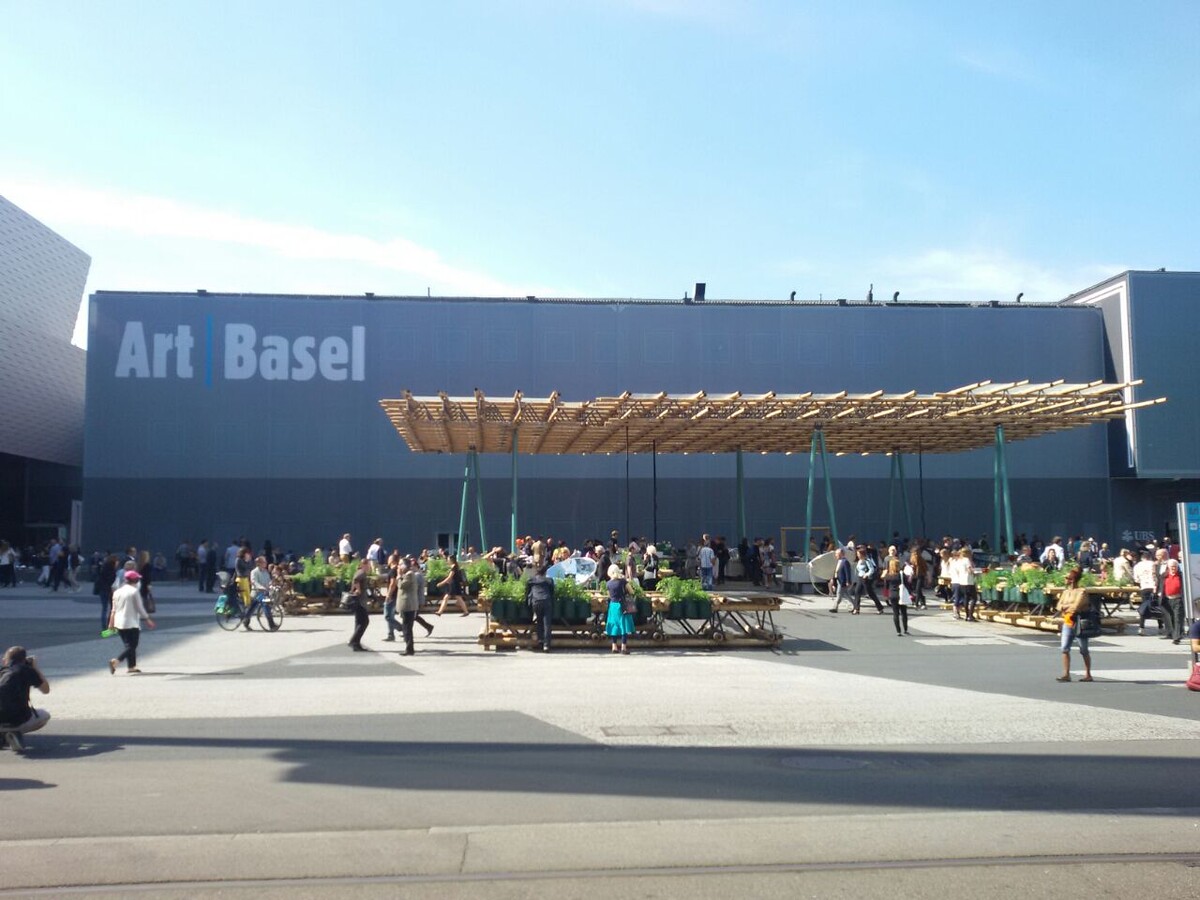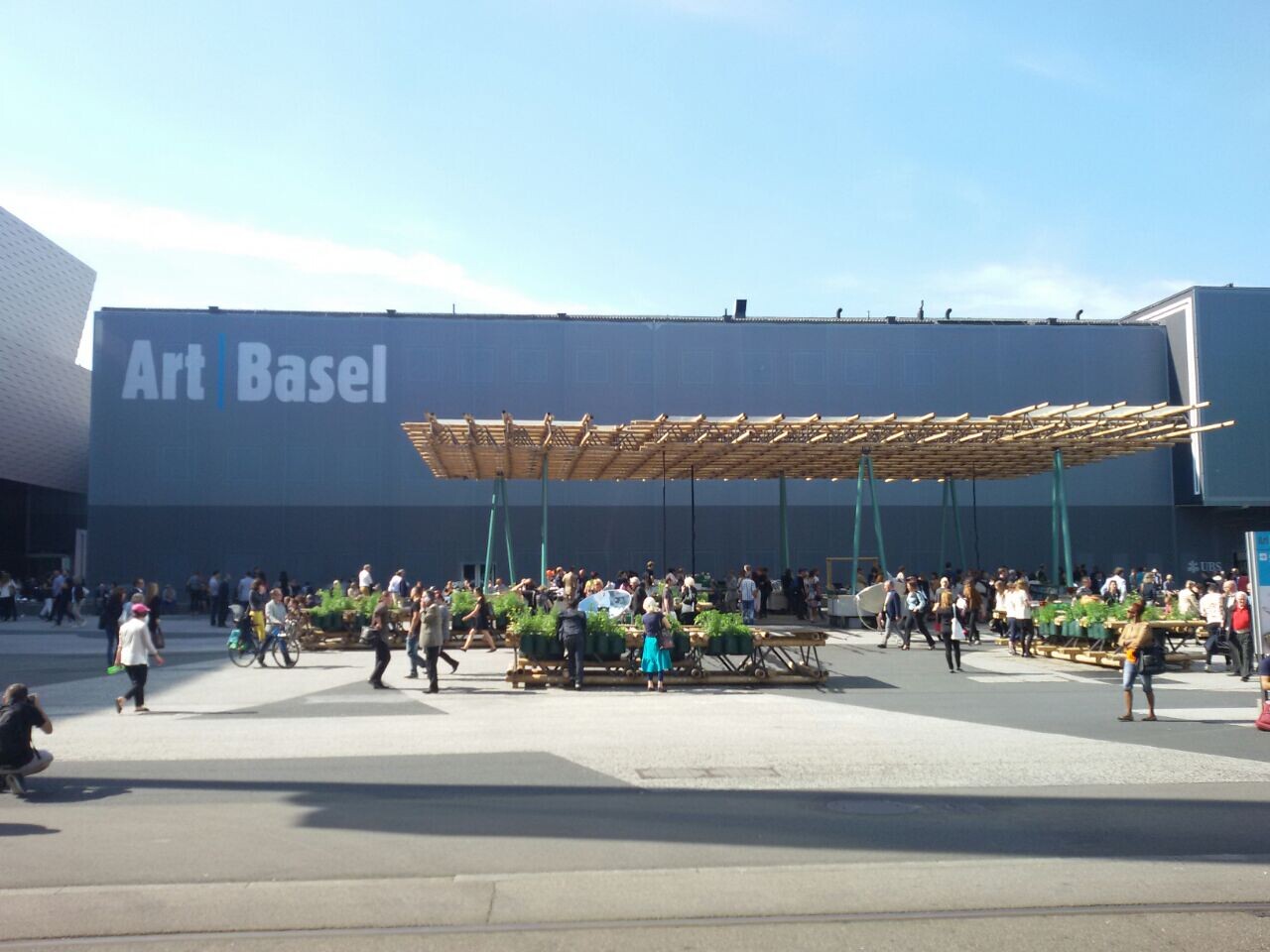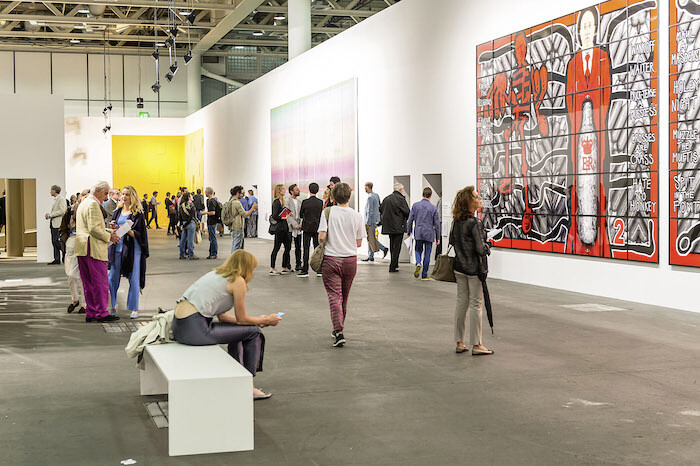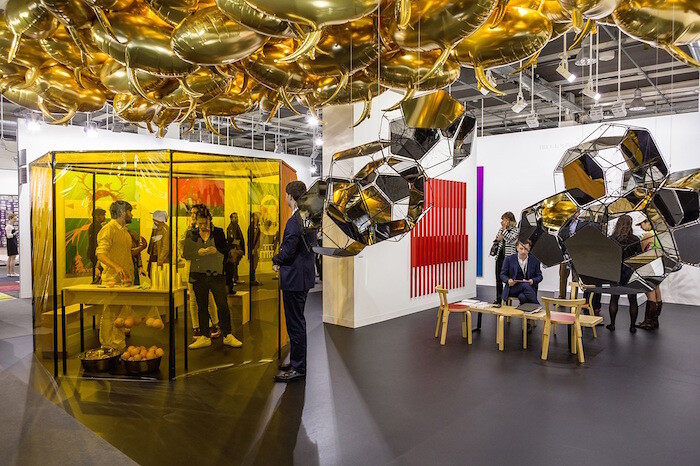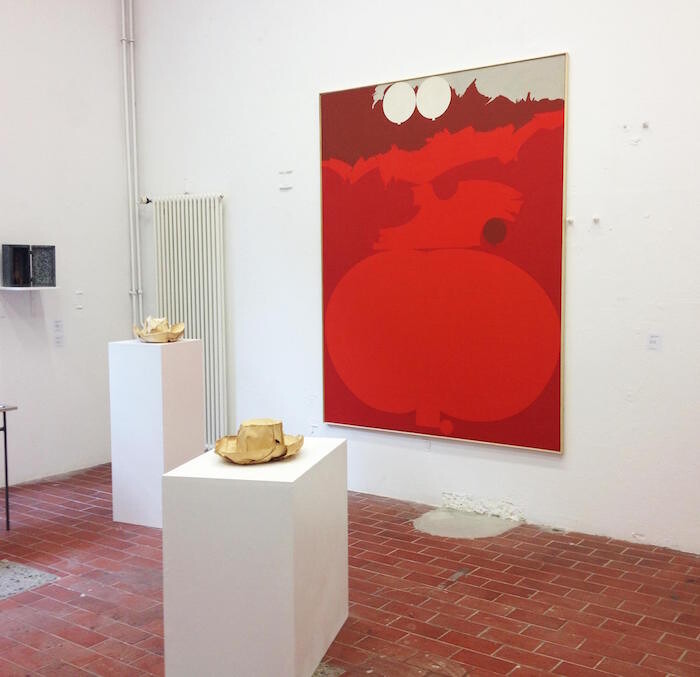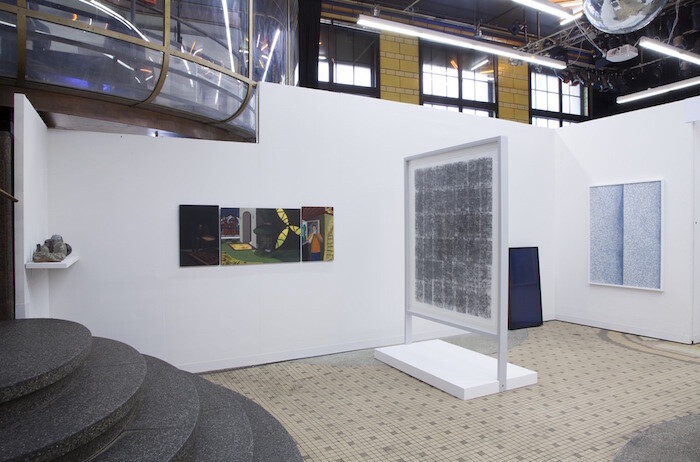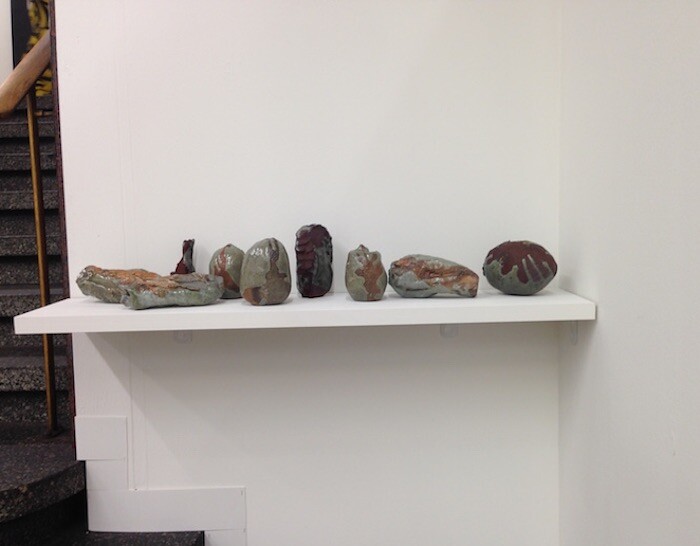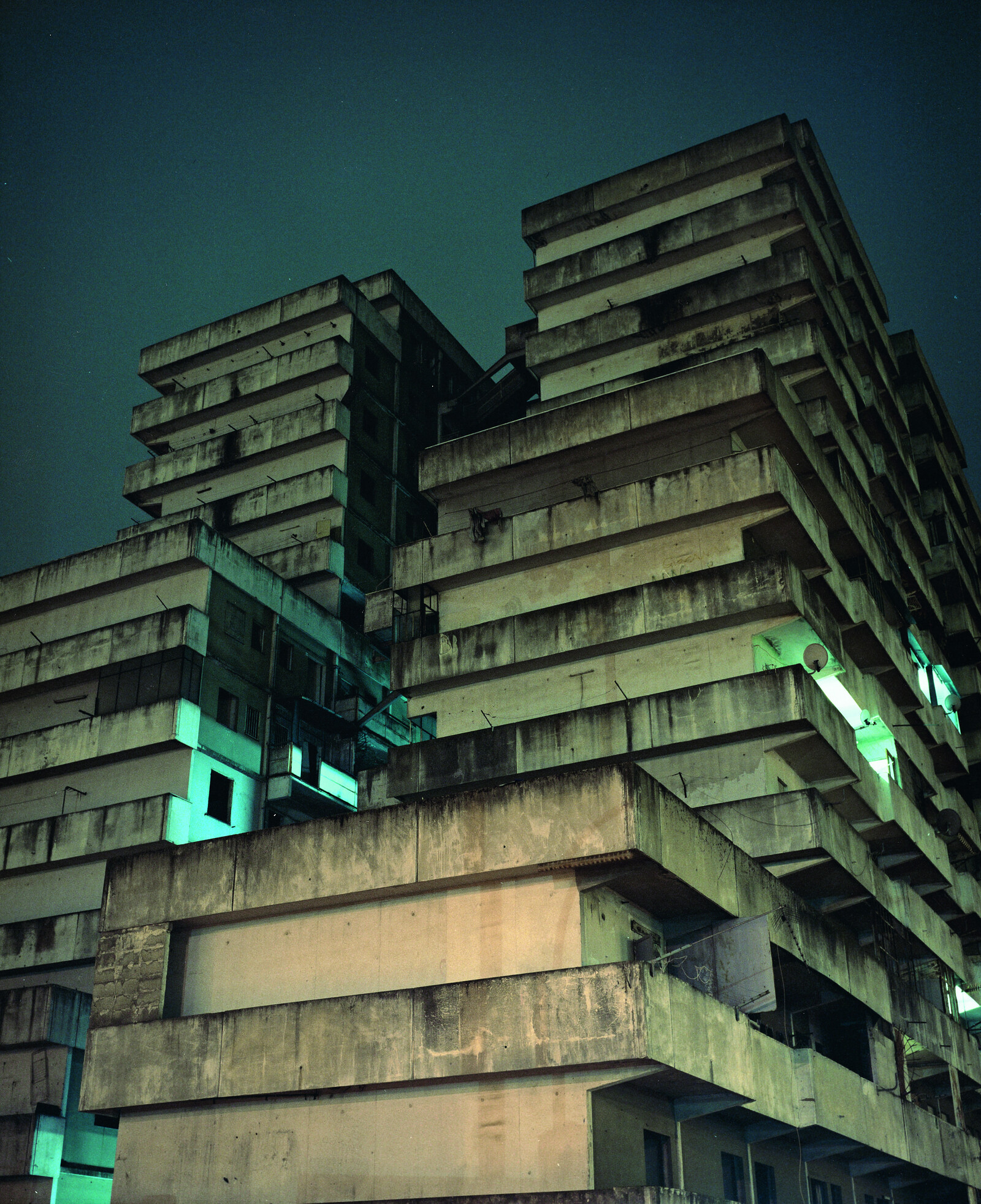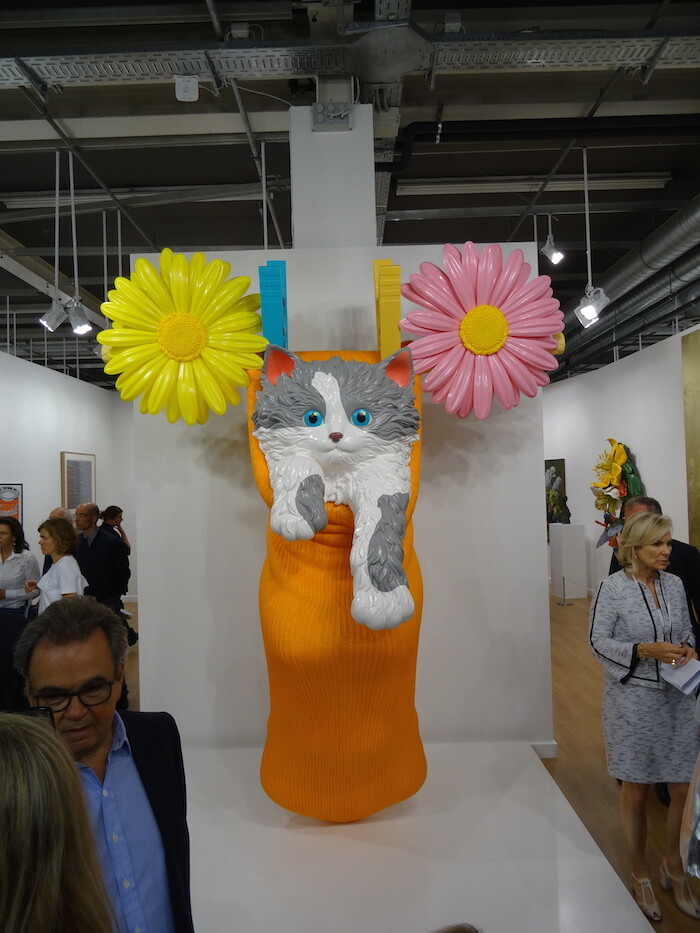There is a first time for everything! Speaking at Art Basel’s media reception, director Marc Spiegler remarked that “the line between finance and art sometimes seems hard to discern.” Pressed, he admitted that he had never drawn this connection in public before, specifying that “art can be used as a financial asset but a very risky one: there is a high carrying cost involved with owning art due to issues such as storage, insurance, and conservation. It can turn illiquid overnight. Meaning, there are artists whose work has suddenly become impossible to sell at the original price. While there are many people who have invested in art successfully, they are either very knowledgeable themselves or they have very good advisors.” Jürg Zeltner, the President of UBS Wealth Management, had no doubt that art had become an asset.
In the past, everybody at the fair avoided giving even the slightest impression that art might resemble a commodity. Art Basel was all about putting together the best art, by the best artists, represented by the best galleries, and placing it in the best private and public collections. It got a bit monotonous over the years.
Suddenly Art Basel acknowledges the obvious: art is widely seen as an asset, and one whose reserves seem set to deplete in the immediate future. At least this seemed to be the common sentiment among the “First Choice” VIPs during the Tuesday morning preview. The size of the artworks on offer has increased notably; there is virtually no major gallery that does not at least have one wall-sized piece on offer. This is an unmistakable sign of a boom—or a bubble. Even recent work by artists from the 1980s who were previously considered only moderately successful is marketable. One has to go back to 2007 to remember such a nervous eagerness to buy whatever has a “brand.” A New York dealer said that he hadn’t had such a crazy first 45 minutes for 10 years. He is a relatively small fish, though, with works that rarely exceed the 100,000-dollar threshold. The really urgent sales, completed in the first few minutes of the preview, were in seven or eight figures. So everything seems like the good old days of the gold rush that preceded the credit crunch. With so much liquidity in this and other markets, the boom might very well continue.
There are, however, three elephants in the room. The first is the question of what will happen when interest rates go up—and they will—and more conservative asset classes become attractive again. At that point, more than one investor might be tempted to liquidate his multi-million-dollar investment in art. When several of these—probably contemporary—trophies enter a market with dwindling liquidity, times will get rough. It is this top market segment that Art Basel has focused on during recent years.
The second elephant is LISTE, formerly Basel’s “young art fair” (the subtitle has been quietly dropped this year). As Art Basel has become too big a behemoth to process the younger generations of galleries and artists, it has depended more and more on LISTE as an incubator. With the recent paradigm shift to jettison the principle that no gallery could participate more than three times, LISTE has changed into the semi-official switchyard for Art Basel. Now there are so many galleries exhibiting at LISTE for the fifth, sixth, or seventh time that there is no space for young talent. Monitor from Rome, for example, had its debut at LISTE in 2006. When Plan B from Cluj had a booth in the Feature section at Art Basel in 2013 its spot at LISTE went to Sabot, also from Cluj. The following year, Plan B returned. Both galleries seem now to have a permanent subscription to the fair. Which means that collectors have to look elsewhere for the next generation of Romanian art. Half of the German Pavilion from this year’s Venice Biennial is on view at KOW from Berlin, which represents Hito Steyerl and Tobias Zielony. They are hardly new discoveries. With LISTE turning into a fair for mid-career galleries and artists, Art Basel risks losing its connection to the cutting edge. The fair’s crowdfunding initiative for non-commercial art projects can never adequately maintain control over the entire value-added chain of the art industry.
The third elephant may constitute a major threat to the fair in the near future. The Swiss government’s efforts to introduce transparency into the financial markets seems to threaten the system of freeports—the storage facilities for high-value assets that operate like offshore financial centres—upon which many investors depend. The authorities might be inclined to sacrifice this instrument, which is so important to the Swiss art market, on the altar of the US-Swiss relationship in order to keep further turbulences away from the banking system. This would hurt Art Basel deeply, and there is very little it can do about it.
